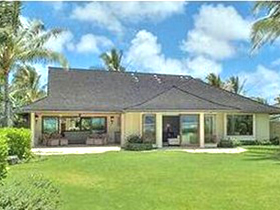

PATUXENT RIVER, MD. -- After 30 years of highly accomplished service, the U.S. Navy retired its first long-range air-to-air missile, the AIM-54 Phoenix , Sept. 30.
One of the world's most technologically advanced tactical missiles, the AIM-54 Phoenix was the first operational radar-guided air-to-air missile that could be launched in multiple numbers against different targets from an aircraft, making the Phoenix the Navy's main fleet air defense long-range weapon.
“The heart of the F-14 Tomcat (soon also to retire) weapons system is the Hughes AWG-9 fire control system, capable of tracking 24 targets and firing six AIM-54 Phoenix air-to-air missiles engaging six different targets,” said Capt.Scott Stewart, the Navy's program manager for Air-to-Air Missile Systems. “With a range of over 100 miles, the AIM-54 gave the F-14 the greatest stand-off engagement capability of any fighter in the world. For years, Soviet air crews flying Badger, Bear and Backfire bombers feared the unprecedented capabilities of the Phoenix Missile."
"As we retire the AIM-54 Phoenix missile, we pay tribute to the men and women of Naval Aviation, Grumman and Hughes who designed, tested and operationally employed the Phoenix for over 30 years," added Stewart. "Since the earliest days of carrier aviation, air superiority fighters have been called upon to provide air cover for the fleet. None have been more formidable in performing this mission than F-14 Tomcats armed with AIM-54 Phoenix Missiles.
"I know I'm just one of many that will miss the Phoenix, but I'm also fortunate to be involved with the development of transformational missile technologies," he added. "I am confident that our warfighters have the best warfighting capabilities in the world, even with the Phoenix retired."
A product of two U.S. missile programs – the Navy’s Bendix AAM-N-10 Eagle and the Air Force’s Hughes GAR-9, Phoenix long-range intercept concept development began in 1960. The Hughes Aircraft Company was first selected to develop the Phoenix in 1962, with the Raytheon Company joining later in 1988.
After five years of research and development, the first prototype flight tests were conducted in 1965. Sept. 8, 1966, an A-3A Skywarrior performed the first successful full-scale test using all missile control system functions over the Navy Pacific Missile Range near San Nicholas Island, Calif.
Nov. 21, 1973, marked a milestone for Phoenix with the first full arsenal testing on an F-14 operating over the Pacific Missile Sea Test Range. Within 38 seconds, the Tomcat launched and simultaneously guided six Phoenix missiles, at six separate targets 50 miles away, scoring four direct hits.
The AIM-54A entered service with the U.S. Navy in 1973 and became operational in 1974. The first F-14A Tomcat squadrons to use the Phoenix were Strike Fighter Squadron (VF) 1 "Wolfpack" and VF-2 "Bounty Hunters."
After several variants, the long-range concept ultimately evolved, providing Phoenix the capability to initially guide itself using the semi-active radar mode and the Tomcat’s AWG-9 weapon control system, and when close enough to its target, assume guidance control using the active radar system. The C variant incorporated a new active radar fuse and higher-thrust motor. Combining these upgrades improved its overall effectiveness and intercept capabilities. The AIM-54C was introduced to the fleet in 1981, and entered full-rate production in January 1984.



















